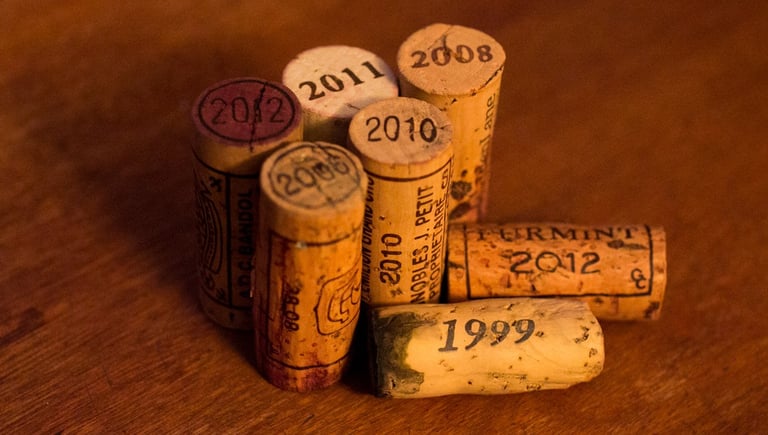
Subscribe to our newsletter
Understanding Wine Vintages
The Role of Time and Nature
5/23/20242 min read


Introduction
In the world of wine investment, the vintage year of a wine—the year in which the grapes were harvested—can significantly influence its value, collectibility, and aging potential. This week, we dive into the importance of vintages in winemaking, exploring how environmental factors and timing can dramatically shape a wine's profile and investment worth.
1. The Impact of Climate on Vintage Quality
Weather Patterns: The weather during the growing season is perhaps the most critical factor affecting the quality of a vintage. Optimal conditions, such as a warm spring and a dry, sunny harvest period, can lead to the production of exceptional vintages.
Climate Variability: Changes in expected weather conditions can either enhance or hinder the ripening process. For instance, an unexpectedly cool summer might delay ripening, while a sudden heatwave might accelerate it, each scenario affecting sugar and acid levels in the grapes.
Extreme Weather Events: Hail, frosts, and prolonged rain near harvest can damage vines and dilute grape flavors, significantly impacting the quality and quantity of the vintage yield.
2. Vintage Variation and Wine Styles
Consistency vs. Variation: In regions with less climatic variation year over year, such as Napa Valley, vintages tend to be more consistent. In contrast, areas like Bordeaux or Burgundy, which can experience significant annual weather shifts, often see more pronounced vintage variations.
Expression of Terroir: Good vintages provide a clearer expression of terroir—the complete natural environment in which a particular wine is produced, including factors like soil, topography, and climate.
3. How Vintages Influence Wine Investment
Collectibility and Scarcity: Exceptional vintages often become highly sought after, especially when they are scarce. Wines from acclaimed vintages can increase in value over time, particularly if they are from well-regarded wineries.
Age-Worthy Wines: Wines from stellar vintages typically have a better aging potential. Investing in such wines can be advantageous as their flavor profiles evolve and improve over time, potentially increasing their market value.
4. Assessing Vintages for Investment
Vintage Charts: These are useful tools for investors. They provide a snapshot of the quality and character of wines from a particular region in a specific year and can guide buying decisions.
Expert Opinions: Ratings and reviews from wine critics can also influence the perceived value of a vintage. Wines that score high on reputable scales (such as those from Robert Parker or Wine Spectator) are often more desirable.
Market Trends: Keeping an eye on auction results and market demand can help investors understand which vintages are currently undervalued or poised for appreciation.
Conclusion
Understanding vintages is crucial for anyone involved in wine investment. The year of harvest can tell a lot about a wine's quality, aging potential, and profitability. As investors, having a thorough grasp of how vintages vary across regions and how these variations impact wine quality will refine your investment strategies and decision-making processes.
Are you ready to explore the intricate world of wine vintages further and make more informed investment decisions? Subscribe to our newsletter for ongoing insights, and join us next week as we uncover the secrets to mastering wine tasting—the cornerstone of wine appreciation.
